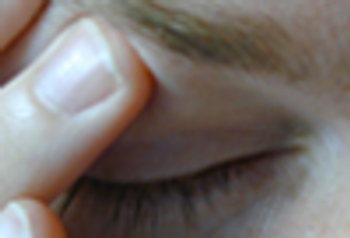
Whether handheld phones increase the risk of brain tumors has long been controversial. Are children and adolescents at higher risk because of their developing brain and smaller head size?

Whether handheld phones increase the risk of brain tumors has long been controversial. Are children and adolescents at higher risk because of their developing brain and smaller head size?

Give us your opinion on our latest poll, and see what your colleagues are saying. You can see the results of our previous surveys here as well.

Early adolescence appears to be an important time to review the importance of frequent blood glucose monitoring in type 1 diabetes. Find out why adherence behavior at puberty could have consequences for glycemic control through adolescence.

A study of new data from the latest Oregon Healthy Teens survey adds knowledge of behaviors associated with the "choking game" that clinicians could use in a risk assessment as part of a comprehensive adolescent well visit.

Alcohol consumption by adolescents increases the risk of proliferative benign breast disease in a dose-dependent manner, findings from the Nurses' Health Study II indicate. Find out whether folate intake reduces the risk.

Although some older children and adults have been found to have cross-reactive antibodies to influenza A (H3N2) variant viruses, which were reported with increased frequency in 2011 compared with previous years, the Centers for Disease Control and Prevention is warning that children aged 10 years and younger have few or no cross-reactive antibodies. What does this mean for your younger patients in the event of a sustained outbreak?

New research has found that cumulative exposure to social risk factors in girls aged 1 and 3 years increases their odds of being obese by 5 years, with even higher odds if 2 or more risk factors are experienced at the same time. What are these risk factors, and how do you spot them during visits?

In sexual abuse examinations, children often change their stories. How do you know what to believe? Read 3 key points about the question.

You'll find detailed data on how much practices around the country are paying their various staffers by clicking here...

Digital extension; joint hypermobility; skin elasticity with keloid scars; pectus and scoliosis from skeletal flexibility and deformation; these disparate symptoms and findings point to what diagnosis?

High fevers; more fatigue; rapid onset of illness distinguish influenza from colds and other viral conditions. Here, more diagnostic pearls here from Dr. Pytlak's blog.

Episodes of recurrent head deviation to one side followed by irritability affect this infant, lasting for days. Migraine headaches affect mother and aunt. Is there a clue in the history?

Autism spectrum disorders (ASDs) now affect 1 in 88 children in the United States and are almost 5 times more common among boys than girls, according to estimates based on a new study from the Centers for Disease Control and Prevention (CDC) Autism and Developmental Disabilities Monitoring (ADDM) Network. Why are the numbers growing?

Increasing out-of-pocket prescription costs may be responsible for reductions in asthma medication use among children and more frequent asthma-related hospitalizations. What strategies can help you improve medication therapy adherence in your patients with asthma?

Nonalcoholic fatty liver disease is the most common cause of pediatric chronic liver disease. New research has found that genetic variants are associated with increased susceptibility to fatty liver disease in children with obesity. What does this finding mean for your patients with obesity?

White teenage girls with obesity who lose weight may benefit physically, but the weight change does not guarantee a boost to their self-esteem. Why is it important to help patients overcome the negative stereotypes associated with obesity?

The presence of foul or strong urine odor is often taken as an indicator of urinary tract infection (UTI) in young children. A new study finds that parent report of malodorous urine increases the likelihood of infection among patients being evaluated for suspected UTI, but is the association strong enough to confirm a diagnosis?

Abnormal childhood aggression : When systems are unbalanced Mastering the language : Communicating with parents who have low health literacy Dermcase : Now where did he get that big blister? Puzzler : Chest pain in child with persistent fever Updates : Alcohol screening, FDA approves Lucinactant Medication Poisoning, Chlamydia testing, PPACA Home Health Provision

The problem of pediatric medication poisoning is getting worse, according to a new study.

The US Food and Drug Administration has approved lucinactant, a new surfactant that prevents respiratory distress syndrome, most common in babies born 6 weeks or more before their due dates.

A study finding that tweens start out ambivalent toward cigarette and alcohol use also suggests that their negative associations with the substances are more easily weakened than their positive associations can be strengthened.

To find out what factors raise the risk of prescription going unfilled after an emergency department visit, researchers conducted a study in children discharged with a prescription from the pediatric ED of an urban safety-net hospital serving a low-income population.

You are called to the emergency department to evaluate a 15-month-old child with a "burn" on his foot.

Pediatricians can still ensure quality patient care and optimal outcomes even after they realize that caretakers cannot process basic health information.

This case involves an 11-year-old boy who presented with persistent fever, generalized muscle aches, and progressive right-sided chest pain.

Aggressive behavior could be considered developmentally normal in most children, but when aggression becomes more intense and occurs frequently, intervention may be necessary.

It is apparent to anyone who works with children that available US child and adolescent mental health services are woefully inadequate to meet the needs of children and their families.

Investigators used recent data to compare the screening value of 3 questions posed to 166,000 teens aged 12 to 18 years about their alcohol consumptionfor identifying drinking problems.

Although the Centers for Disease Control and Prevention recommends annual chlamydia screening for sexually active women aged 25 years and younger, data from 2006 to 2008 show that only 30% of those aged 15 to 19 years reported having had a chlamydia test within the past year.

Child health advocates need to be at the table now for health care reform at the state and local levels, according to one expert.